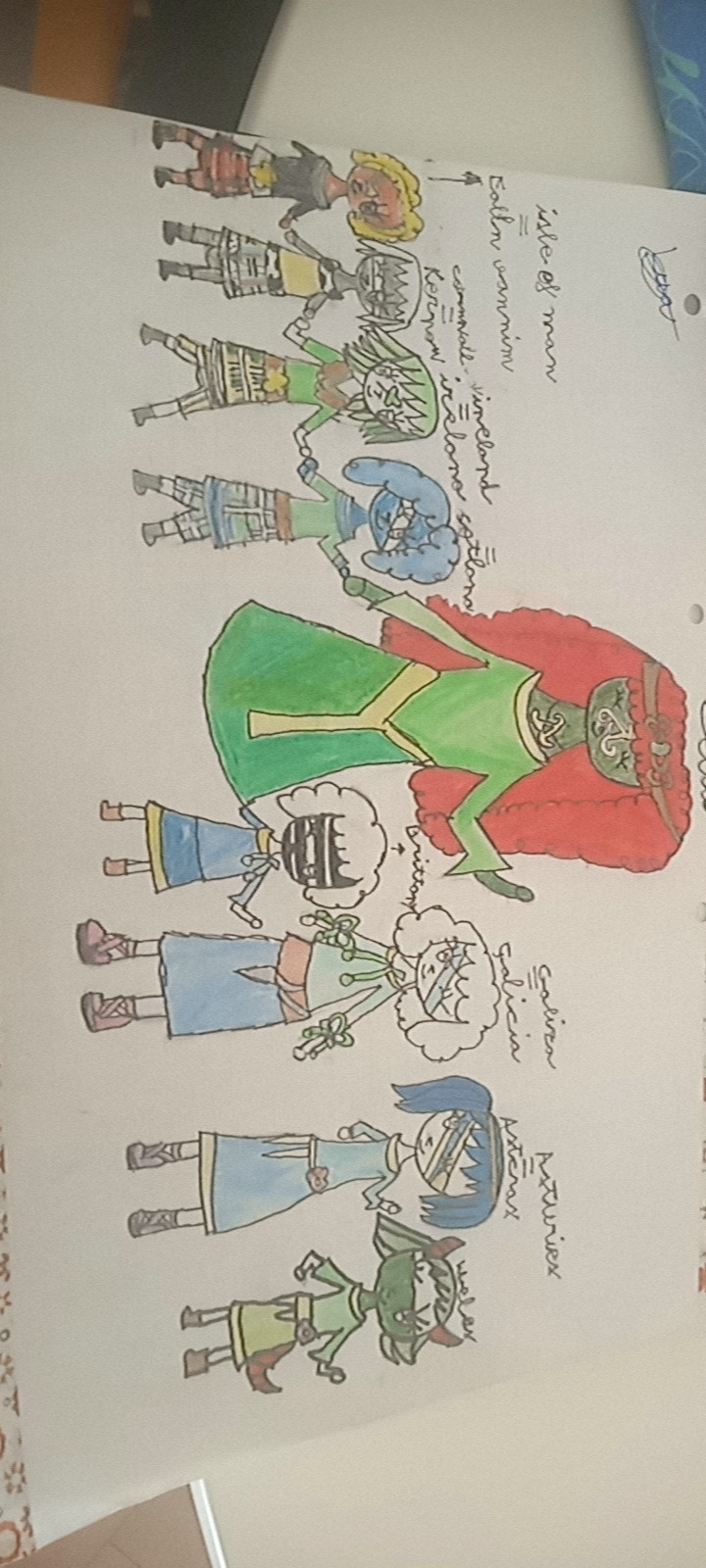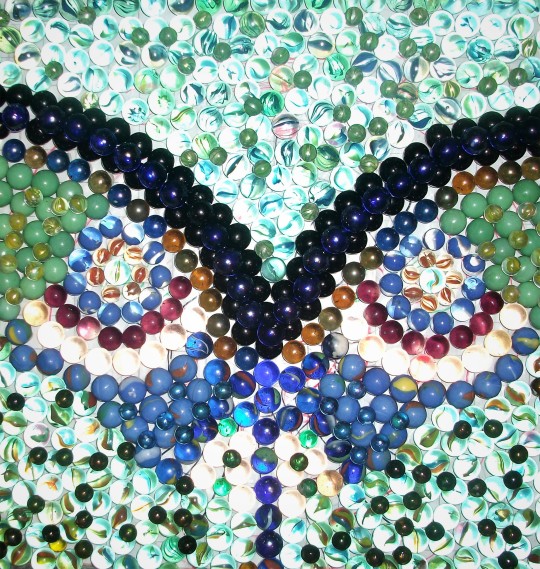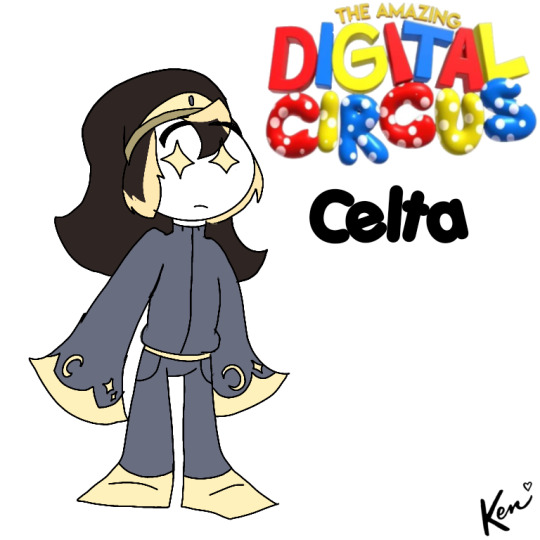#celta
Explore tagged Tumblr posts
Text
Água de Lua no Paganismo

A água de lua é uma prática pagã muito conhecida, na qual a água é carregada com a energia da lua para ser usada em rituais, feitiços e práticas espirituais. A energia da água é influenciada pela fase da lua, e isso determina seus usos e intenções.
Como Fazer Água de Lua
Materiais Necessários:
Água pura: Use água filtrada, de fonte natural ou mineral.
Recipiente transparente: De preferência de vidro, para que a luz da lua possa passar.
Ervas ou cristais (opcional): Adicione elementos que correspondam à sua intenção.
Espaço externo ou janela: Um lugar onde a lua esteja visível.
Passo a Passo
Escolha a Fase da Lua: Lua Nova: Para começos, novos projetos e renovação. Lua Crescente: Para crescimento, atração e expansão. Lua Cheia: Para poder máximo, realização e energias intensas. Lua Minguante: Para limpeza, banimento e libertação.
Prepare o Recipiente: Coloque a água no recipiente transparente. Se desejar, adicione ervas ou cristais seguros para imersão (ex.: quartzo claro, ametista).
Posicione a Água sob a Lua: Coloque o recipiente em um local onde a luz da lua possa alcançá-lo, como ao ar livre ou numa janela. Certifique-se de que o local esteja protegido de contaminações.
Intencione a Água: Segure o recipiente e concentre-se em sua intenção. Visualize a energia da lua carregando a água com o propósito desejado. Você pode dizer algo como: "Eu consagro esta água com a energia da lua, que ela seja uma ferramenta de [insira sua intenção: cura, proteção, amor, etc.]."
Deixe Sob a Lua Durante a Noite: Deixe a água exposta à luz da lua por várias horas, de preferência durante toda a noite.
Armazene a Água: Na manhã seguinte, tampe o recipiente e guarde a água em um local fresco e escuro. Ela pode ser armazenada por semanas, mas é ideal renovar regularmente.
Como Usar a Água de Lua
Purificação: Limpe cristais, ferramentas mágicas ou espaços com água de lua.
Rituais: Use em feitiços relacionados à fase da lua em que foi feita.
Banhos Rituais: Adicione à água do banho para absorver suas energias.
Meditações: Borrife levemente em você antes de meditar para se conectar com a energia lunar.
Cozinha Mágica: Misture uma pequena quantidade em chás ou receitas (se a água for potável).
Significados das Fases da Lua e Seus Usos
Lua Nova: Energia: Renovação, introspecção, novos começos. Usos: Rituais para iniciar projetos ou limpar energias antigas.
Lua Crescente: Energia: Expansão, crescimento, atração. Usos: Feitiços para prosperidade, amor ou desenvolvimento pessoal.
Lua Cheia: Energia: Potência máxima, manifestação, intensificação. Usos: Rituais de celebração, empoderamento e desejos importantes.
Lua Minguante: Energia: Liberação, limpeza, banimento. Usos: Feitiços para afastar energias negativas, terminar ciclos ou cortar laços.
Cuidados e Considerações
Evite Contaminação: Certifique-se de que a água esteja limpa, especialmente se for usada em contato com o corpo.
Armazene Corretamente: Água de lua pode perder sua energia com o tempo; renove-a regularmente.
Personalize o Ritual: Adapte o processo às suas crenças e intenções específicas.

A água de lua é uma ferramenta poderosa para quem busca se conectar com a energia lunar e utilizar suas influências para potencializar práticas mágicas e espirituais.
moots: #Paganismo #EspiritualidadePessoal #NaturezaSagrada #CaminhoPagão #MitologiaPagã #Politeísmo #DeusasEDeus #RituaisPagãos #Sabás #MagiaNatural #CiclosDaNatureza #PaganismoEclético #Wicca #Druidismo #Heathenismo #MitologiaNórdica #MitologiaGrega #MitologiaCelta #TradiçõesPagã #MagiaEnergética #DivindadesAntigas #EspiritualidadePagã #AltarPagão #SagradoFeminino #ConexãoComANatureza #RituaisDaLua #MagiaDasErvas #MagiaDoDiaADia #ReconstrucionismoPagão #DeusaInterior #Paganism #SacredNature #SpiritualJourney #EclecticPagan #Polytheism #PaganPath #GoddessesAndGods #NatureCycles #Sabbats #NaturalMagic #WitchcraftAndMagic #AncientGods #PaganTraditions #WiccaWitchcraft #Druidry #Heathenry #NorseMythology #GreekMythology #CelticMythology #SacredFeminine #LunarRituals #HerbalMagic #EverydayMagic #Reconstructionism #AltarsAndOfferings #PaganCommunity #EarthSpirituality #MysticalJourney #DivineConnection #ModernPagan
#wicca#espiritualidade#rituais#ritual#tradição#paganismo#pagã#politeísmo#afrodite#aphrodite#altar#deusa#deus#druidismo#grimório#heathenismo#helenismo#celta#bruxaria#bruxa#nordico#nórdica#natural#natureza#magia#mitologiagrega#mitologia
53 notes
·
View notes
Text

Dibuix d'Alan Lee per a l'obra The Mabinogion, traduït per Gwyn Jones i Thomas Jones.
#art#pintura#El Mabinogion#Mabinogion#llegenda#mitologia celta#mitologia europea#celta#cèltic#drac#Alan Lee#fantasia#fantasia èpica#fantasia mítica#fantàstic
31 notes
·
View notes
Text
Welp, I thought it was high time I redesigned Celta ever since the announcement so.. Here ya go!

Yep! That's basically it!
--
Digital Wonderland AU belongs to @endomentendo
Oh hey, what's this?

#d.wonderland oc#digital wonderland#tadc#tadc fanart#tadc oc#tadc celta#celta#naomi tsukibara#mike tsukibara#lore#angst#the amazing digital circus#my character#not my au
25 notes
·
View notes
Text

aabon35
#Halloween#fiesta#Octubre#trick#Celta#pagano#pumpkin🎃#http://aabon35.blogspot.com ⚫️ http://arubio28814.blogspot.com#artmarbles#truco#trato#sweets#Hallows#cake#decoration#movie#artecanica#cinema#a#cine#pelicula#disfraz#terror#fear#theater#ia#witch
21 notes
·
View notes
Text
"Otros quieren amar, entregarse, pero les falta energía. Llevan en sus corazones los cadáveres de antiguas relaciones, son adictos a las heridas como confirmación de su identidad "
-Anam Cara El Libro de la Sabiduría Celta
43 notes
·
View notes
Text

Benni McCarthy • RC Celta de Vigo (1999-2003)
#Deporte#Fútbol#Benni McCarthy#Celta#Futbolista#Delantero#Celta de Vigo#La Liga#Primera División#RC Celta de Vigo#España#Deportes#Real Club Celta de Vigo#Football#Sport#Footballer#Forward#Spain#Top Tier#Sports#Retro Fútbol#1990s#2000s#90s#00s
2 notes
·
View notes
Text

Haunted Manor Enchanting Fantasy Music for writing and reading
#fantasy#haunted manor#celtic#music for writing#music for reading#fantasia#celta#música celta#música para ler#música para escrever
3 notes
·
View notes
Text
CELTA — kurs metodologiczny
CELTA to światowej sławy kurs dla lektorów języka angielskiego, ale skoro tu jesteś, to pewnie już o tym wiesz. Opowiem Ci w takim razie, jak ten kurs wygląda od środka 🙂
Oficjalne informacje znajdują się tu.
Opłaty
Kurs nie jest tani. Oprócz opłat za kurs dochodzą jeszcze opłaty związane z zakwaterowaniem (jeśli kurs jest organizowany w innym mieście — odradzam dojazdy, bo zwyczajnie nie będzie na nie czasu), materiałami do nauki (jeśli lubisz mieć wszystkie książki w wersji papierowej), jedzeniem (coś trzeba jeść przez te 4 tygodnie) i związane z wszelkimi innymi drobnymi wydatkami, które na pewno się pojawią.
W 2018 roku za kurs (w Krakowie) zapłaciłam ok. 5500 złotych, wynajęcie pokoju kosztowało 1700 złotych (za miesiąc), a inne drobne-niedrobne wydatki wyniosły mnie około 700 złotych.
Aktualne ceny są na tej stronie.
Materiały do nauki
British Council w Krakowie zapewnił nam większość materiałów — książki, ćwiczenia, kserówki — wszystko było na miejscu do naszej dyspozycji. Do dyspozycji mieliśmy też drukarkę, ksero i komputery (wszystko znajdowało się w budynku British Council).
Przed kursem dostaliśmy również kilka e-maili informacyjnych dotyczących literatury, z którą należało się zapoznać przed kursem. Były to książki dla nauczycieli, ale też i książki do gramatyki:
Teaching English Grammar, Jim Scrivener
Grammar for English Language Teachers, Martin Parrott
Learning Teaching, Jim Scrivener
English Grammar in Use, Raymond Murphy
Teach English as a Foreign Language: Teach Yourself, David Riddell
Practical English Usage, Michael Swan
W PDF-ie, który dostaliśmy od wykładowców, były też książki, których lepiej unikać. Powyższa lista, to książki, które są rekomendowane jako jedne z lepszych.
Moja ukochana książka do gramatyki to:
A Practical English Grammar, Thomson and Martinet (POLECAM!)
Od siebie mogę jeszcze polecić te kanały:
Niesamowite filmiki, które pokazują, jak powinny wyglądać lekcje według zasad CELTY, TESOL i TEFL.
Polecam zapoznać się z nagraniami z obu kanałów przed kursem! Naprawdę pomogą poczuć się Wam pewnie przed kursem, a sam kurs już nie będzie wydawał się straszną abstrakcją, a już na pewno nie będzie bardzo przytłaczający.
Organizacja kursu
Zanim dostaniecie się na kurs, należy wypełnić formularz i rozwiązać ćwiczenia, które mają sprawdzić Wasz poziom wiedzy językowej. Nie pamiętam, ile dokładnie zadań było na tym teście, ale sporo. Test składał się z pytań otwartych i zamkniętych.
Jeśli osoba sprawdzająca (przeważnie jest to jeden z wykładowców) uzna, że test został dobrze wypełniony, zostaniecie zaproszeni na krótkie interview. Moja rozmowa odbyła się na Skype i trwała 45 minut. Wykładowca pytał o test, dlaczego chcę uczyć, jak wyjaśniłabym różnicę między Past Simple a Past Continuous i o kilka innych rzeczy. Cała rozmowa oczywiście była po angielsku.
Kilka godzin po rozmowie dostałam kolejną wiadomość e-mail z informacją, że zostałam przyjęta i z masą informacji dotyczących organizacji kursu, pierwszego dnia itp. Wszystko było szczegółowo rozpisane. Informacje były też w formie PDF-ów.
Wiadomości od wykładowców przed samym kursem dostałam sporo. Wszystko wyglądało trochę przerażająco, ale zespół krakowskiego British Council odwalił kawał dobrej roboty — przeprowadzili nas przez sprawy organizacyjne śpiewająco!
To jak w takim razie wygląda kurs?
Kurs jest bardzo intensywny, ale to bardzo (zdarzało się, że ludzie płakali, bo zwyczajnie nie nadążali albo czuli się bardzo przytłoczeni nawałem pracy).
Kurs składa się z dwóch części: porannej (output sessions; od 9 do 13) i popołudniowej (input sessions; od 14 do 19)
Pierwszy dzień kursu to były sprawy organizacyjne i input session -zostaliśmy podzieleni na grupy, dostaliśmy konspekty lekcji (tak, we wtorek już rano wszyscy uczyliśmy według szczegółowych wytycznych), a po południu były pierwsze wykłady dotyczące metodologii nauczania.
Output sessions to nic innego jak praktyki. Uczysz od razu. Od drugiego dnia kursu.
Na początku wykładowcy dają bardzo szczegółowe konspekty, więc nie ma się o co martwić. Z każdym kolejnym dniem dostawaliśmy coraz mniej wytycznych i musieliśmy sami już wszystko wymyślać.
Input sessions to wykłady, czyli jak uczyć, aby nasze lekcje były logiczne i efektywne. Wykłady były super. Bardzo dobrze zorganizowane i wszystkie materiały zapewniali wykładowcy. Nie robiłam notatek, bo wszystko podawali nam na tacy. Głównie dlatego, aby nas odciążyć.
Kurs jest naprawdę intensywny - po zajęciach trzeba wrócić do domu i przygotować się na następny dzień. Były takie osoby, które siedziały nad materiałami do 3 w nocy (przygotować prezentację, kserówki, konspekt, który składał się z 5 stron itp.)
Przyznam szczerze, że dzięki tym kanałom, które poleciłam wyżej, ja siedziałam najpóźniej do północy, a nawet udało mi się oglądnąć kilka odcinków serialu czy wyjść na spacer.
Do tego dochodzą jeszcze zadania domowe. Po każdym tygodniu dostaje się zadanie na weekend (nie pamiętam kiedy dokładnie trzeba było je oddawać, ale ja z reguły wyrabiałam się w weekend), które wliczały się do końcowej oceny.
Przykłady takich zadań można znaleźć na stronie Academia.eu. W wyszukiwarce wpisywałam: CELTA assigment tasks i, choć nie były dokładnie takie jak te w krakowskim British Council, wiedziałam, na co się przygotować i jak je ugryźć, jak już dostałam właściwe do ręki.
Na tej stronie znalazłam też przykłady konspektów i innych materiałów związanych z CELTĄ. Polecam tam zajrzeć, bo ja, jako jedyny z całej grupy, wiedziałam najwięcej na temat kursu - właśnie dzięki tej stronie i filmikom, które poleciłam wyżej.
Podsumowując:
output sessions (praktyki; uczysz od drugiego dnia kursu; na poczatku dostajesz szczegółowe wytyczne, jak uczyć, a z czasem tych wytycznych jest coraz mniej i cała odpowiedzialność za zorganizowanie lekcji spoczywa na Tobie)
input sessions (wykłady; wykładowcy zapewniają wszystkie materiały)
spotkania one-on-one z wykładowcami, aby mówić Twoje postępy na kursie (z reguły po drugim tygodniu)
zadania domowe po każdym tygodniu kursu
Porady
Warto przygotować się do kursu. Kurs jest NAPRAWDĘ intensywny.
obejrzyj kanały, które zasugerowałam (one naprawdę pomogą).
przeszukaj stronę Academia.eu, aby znaleźć materiały odnośnie do kursu i czego można się na nim spodziewać (głównie chodzi o konspekty lekcji i zadania domowe).
zaprzyjaźnij się ze słownikami i transkrypcją słów.
warto zwracać uwagę, które słowa są potoczne, a które formalne (rejestr języka), bo w konspektach trzeba będzie takie informacje uwzględniać (trzeba też oznaczać idiomy i inne informacje, które przydadzą się uczniom, aby lepiej operować językiem).
pamiętaj, aby zwracać uwagę na swoje słabości - w konspekcie jest rubryka, która pyta o "personal goals" (czyli, co chcesz poprawić u siebie jako nauczyciela - może za dużo gadasz? Jeśli tak, to tę informację trzeba wpisać w tę rubrykę).
słuchaj tego, co mówią uczniowie i wyłapuj ich błędy - każda lekcja powinna skończyć się segmentem "error check". Na początku będzie to trudne do zrealizowania.
na podstawie materiałów znalezionych na stronie Academia.eu spróbuj napisać swój pierwszy konspekt lekcji - w ramach praktyki.
odpowiedzi w książkach to tylko sugestie - jeden z naszych prowadzących (native speaker) zawsze powtarzał, że nie musimy się sztywno trzymać odpowiedzi w książce.
książki do gramatyki i inne materiały warto mieć w PDF-ach na laptopie - ja zabrałam ze sobą kilka książek i to był błąd, bo ani razu do nich nie zajrzałam.
staraj się współpracować z ludźmi z kursu - nie jesteście dla siebie konkurencją, a współpraca pomoże wam przetrwać i przyspieszy progres
Moje przemyślenia
Najważniejsze pytanie to: Czy było warto?
Było.
Ale!
Kurs "obiecuje", że po zdobyciu certyfikatu będzie można nauczać na całym świecie... nie do końca.
Wiele krajów zatrudnia już tylko native speakerów (np. Korea, Chiny, Japonia) lub wymaga udokumentowanego pięcioletniego (czasami mniej, czasami więcej) pobytu w anglojęzycznym kraju (studia, praca itp.). Więc CELTA może i daje międzynarodowe kwalifikacje, bo faktycznie jest respektowana przez wiele instytucji na całym świecie, ale nie każdy będzie mógł z tego prestiżu skorzystać. Niestety o tym na kursie już nie mówią.
Mimo wszystko uważam, że kurs jest warty swojej ceny, a doświadczenie i wiedza zdobyta na tym kursie jest nieoceniona. Szkoły i inne miejsca, do których aplikowałam, widząc, że mam ten certyfikat, bez zastanowienia odpowiadały na moje zgłoszenie.
WAŻNE
CELTA to kurs METODOLOGICZNY, więc nie uprawnia do nauczania w polskich szkołach publicznych, o tym poczytasz więcej tutaj.
2 notes
·
View notes
Text

El simbolismo de las formas geométricas: Triple Recinto Celta
Con "recinto" se hace referencia a patrones geométricos elaborados por los celtas y que evocan distintos conceptos que ayudan a comprender cómo los celtas entendían el mundo exterior e interior. Además del recinto, existe el nudo cuya representación es mucho más evidente y frecuente, ya que del recinto solamente existen especulaciones y poca documentación académica.
De acuerdo con David Fontana (1934 - 2010) en El Lenguaje Secreto de los Símbolos, este símbolo de origen celta representa la consciencia humana. El cuadrado interior es el inconsciente en el que se hallan las visiones de los dioses y otros mundos; el cuadrado exterior es el contacto con el mundo físico a través de los sentidos; y el cuadrado central es el puente que conecta a ambos, es el contacto entre los mundos exterior e interior.
El escritor masón René Guénon (1886 - 1951) en Símbolos Fundamentales de la Ciencia Sagrada, describe algunos descubrimientos arqueológicos en los que se pueden apreciar cuadrados concéntricos. Las formas geométricas combinadas y superpuestas son muy frecuentes en el arte de los celtas; sin embargo, parece que el triple recinto es muy raro de encontrar y los patrones identificados en cruces celtas, tumbas y monumentos funerarios son parecidos, más no iguales.
El triple recinto está sujeto a la especulación y la subjetividad del autor que lo estudia, su significado en realidad es mera interpretación. Sin embargo, esto no implica que no haya sido posible su uso mágico - ritual. En algunos grupos religiosos neopaganos se ha utilizado para representar conceptos de gran profundidad —como seguramente fue su uso en la cultura celta— y es frecuentemente puesto en joyería y en herramientas rituales para invocar protección, unidad, eternidad, espiritualidad y la naturaleza de los mundos.

www.tarotdeana.tumblr.com
Lee mitos griegos aquí.
Lee mitos japoneses aquí.
Lee mitos coreanos aquí.
#tarot#cartomancia#tarot reading#ocultismo#ocultista#tarot cards#witchcraft#brujería#artes ocultas#cosas de brujas#geometría sagrada#sacred geometry#simbolos#simbolismo#simbología#symbolism#symbols#celta#celtic#celtas#Celtic mythology#arqueology#celtic arqueology#druidas#druida
3 notes
·
View notes
Text


1. 'Looking for love' (Karen Ramirez)
2. 'Don't you want me, baby?' (Human League)
3. 'Champagne Supernova' (Oasis)
4. 'Closer' (The Chainsmokers)
5. 'Wide Awake' (Katy Perry)
The 180-Hour Higher Certificate in TESOL has 20 modules, two of which focus on how to teach grammar and how to teach tenses.
After taking our accredited online TESOL program, you'll hit English teaching out the park!
Use the coupon code: 'BIG20' to get 20% OFF the cost of our course.
18 notes
·
View notes
Text
A Ligação com a Natureza no Paganismo
No paganismo, a natureza é sagrada e central para a espiritualidade. Muitos pagãos veem o mundo natural como uma manifestação do divino, celebrando a conexão entre a Terra, os ciclos naturais e a vida humana. Essa relação é expressa através de rituais, simbolismo e práticas que honram o equilíbrio e a harmonia do mundo natural.

Por que a Natureza é Importante no Paganismo?
A Natureza como Manifestação do Divino: Para muitos pagãos, deuses e espíritos habitam ou se manifestam através da natureza: montanhas, rios, árvores, ventos, etc. Alguns sistemas de crença reconhecem a Terra (Gaia, por exemplo) como uma divindade viva.
Interconexão: A natureza reflete o equilíbrio universal. Tudo está conectado: seres humanos, plantas, animais e os elementos.
Fonte de Energia: A natureza fornece energias espirituais que podem ser utilizadas em rituais e magias, como a força do sol, a calma da lua ou a vitalidade da terra.
Como o Paganismo Honra a Natureza?
Rituais e Celebrações
Rituais Sazonais: Solstícios, equinócios e festas como Beltane ou Samhain celebram os ciclos da natureza.
Celebrações da Colheita: Agradecimentos pelo sustento fornecido pela terra.
Respeito e Conservação: Muitos pagãos se dedicam a práticas ecológicas, como plantar árvores, limpar florestas e proteger habitats naturais.
Rituais ao Ar Livre: Rituais realizados em bosques, montanhas ou à beira de rios, conectando os praticantes diretamente ao ambiente natural.
Uso de Elementos Naturais: Ervas, cristais, água de chuva, terra, fogo e ar são incorporados em práticas espirituais e mágicas.
A Natureza nos Ciclos do Paganismo
Roda do Ano: Os ciclos sazonais são representados pela Roda do Ano, que inclui celebrações como Yule (inverno) e Litha (verão). Isso simboliza nascimento, morte e renascimento, refletindo os ciclos da vida.
Fases da Lua e do Sol: A lua representa emoções, intuição e mudanças. O sol simboliza força, energia e vitalidade.
Os Quatro Elementos: Terra, água, fogo e ar representam diferentes aspectos da natureza e da vida humana.
Práticas Espirituais Ligadas à Natureza
Meditação na Natureza: Conectar-se com a energia de um lugar natural, como uma floresta ou uma praia.
Altares Naturais: Criar altares ao ar livre ou incorporar elementos naturais em altares domésticos.
Oferendas à Natureza: Presentes como flores, frutas ou sementes são deixados como forma de agradecimento.
Magia com Elementos Naturais: Usar ervas, pedras, água ou solo em feitiços e rituais para amplificar intenções.
Simbolismo da Natureza no Paganismo
Árvores: Representam sabedoria, conexão entre céu e terra, e proteção. Exemplo: O carvalho é frequentemente reverenciado por sua força e longevidade.
Rios e Oceanos: Simbolizam fluidez, purificação e renovação.
Montanhas: Representam estabilidade, força e o sagrado.
Animais Totêmicos: Muitos pagãos acreditam em animais como guias espirituais ou mensageiros.
Ligação Prática com a Natureza no Paganismo
Cultivar Jardinagem Sagrada: Plantar ervas ou flores associadas a rituais e oferendas. Caminhar conscientemente em ambientes naturais, observando a energia ao redor.
Banhos na Natureza: Usar rios, lagos ou cachoeiras para purificação espiritual.
Conexão com os Elementos: Atividades simples, como acender uma vela para o fogo ou meditar ao vento, reforçam a conexão com os elementos.
A Natureza como Reflexo Interno
Muitos pagãos veem a natureza como um espelho da vida humana:
Primavera: Novos começos.
Verão: Crescimento e energia.
Outono: Reflexão e colheita.
Inverno: Repouso e renovação.

A ligação com a natureza no paganismo é tanto prática quanto espiritual, permitindo que os pagãos encontrem equilíbrio e harmonia. Ao honrar os ciclos e energias da Terra, os praticantes aprofundam sua conexão com o divino e consigo mesmos, vivendo de forma mais consciente e alinhada com o mundo ao seu redor.
moots: #Paganismo #EspiritualidadePessoal #NaturezaSagrada #CaminhoPagão #MitologiaPagã #Politeísmo #DeusasEDeus #RituaisPagãos #Sabás #MagiaNatural #CiclosDaNatureza #PaganismoEclético #Wicca #Druidismo #Heathenismo #MitologiaNórdica #MitologiaGrega #MitologiaCelta #TradiçõesPagã #MagiaEnergética #DivindadesAntigas #EspiritualidadePagã #AltarPagão #SagradoFeminino #ConexãoComANatureza #RituaisDaLua #MagiaDasErvas #MagiaDoDiaADia #ReconstrucionismoPagão #DeusaInterior #Paganism #SacredNature #SpiritualJourney #EclecticPagan #Polytheism #PaganPath #GoddessesAndGods #NatureCycles #Sabbats #NaturalMagic #WitchcraftAndMagic #AncientGods #PaganTraditions #WiccaWitchcraft #Druidry #Heathenry #NorseMythology #GreekMythology #CelticMythology #SacredFeminine #LunarRituals #HerbalMagic #EverydayMagic #Reconstructionism #AltarsAndOfferings #PaganCommunity #EarthSpirituality #MysticalJourney #DivineConnection #ModernPagan
#paganismo#druidismo#paganism#quotes#witchblr#witchcraft#grimoire#bruxaria#writing#pagan#magia#mitologiagrega#folk magic#mitologia#magick#music#makeup#menswear#candle magic#my art#nórdica#nordico#natural#norse paganism#baby witch#celta#witchcraft community#pagan community#chaos witch#witch community
21 notes
·
View notes
Text

«Trobem per tot arreu l'afirmació formal que la tradició primordial del cicle actual prové de les regions hiperbòries; després, hi va haver certs corrents secundaris, corresponents a períodes diversos, dels quals un dels més importants, almenys entre aquells els vestigis dels quals encara es poden discernir, va anar incontestablement de l'Occident a l'Orient. Però tot això es relaciona amb èpoques molt llunyanes, que s'anomenen comunament, 'prehistòriques', i no és d'aquestes de què parlem.
[...] Abans fèiem aŀlusió al corrent tradicional procedent de les regions occidentals, en aquest sentit, els relats dels antics relatius a l'Atlàntida n'indiquen l'origen. Després de la desaparició d'aquest continent, que és el darrer dels grans cataclismes que van succeir en el passat, no és estrany que restes de la seva tradició s'hagin exportat a regions diverses, on es van barrejar amb altres tradicions preexistents, principalment amb ramificacions de la gran tradició hiperbòria. És altament possible que les doctrines dels celtes, en concret, hagin estat un dels productes d'aquesta fusió. No negarem pas aquestes coses; però pensem això: la forma pròpiament atlantea va desaparèixer fa milers d'anys juntament amb la civilització a la qual pertanyia, la destrucció de la qual només es va poder produir a conseqüència d'una desviació que, en certs aspectes, podria ser comparable a la que constatem avui dia, i tot que amb una notable diferència, atès que l'humanitat llavors encara no havia entrat en el Kali Yuga.»
~La crisi del món modern, per René Guénon~
#art#Sol Negre#esotèric#esoterisme#Agartha#Hiperborea#Coneixement#Ressorgiment#tradició primordial#Hiperbòria#Atlàntida#Primera humanitat#celta#cèltic#druida#Kali Yuga#La crisi del món modern#René Guénon
2 notes
·
View notes
Text
countryhumans celtas

8 notes
·
View notes
Text

canicaball
#Halloween 🎃#party#October#digitalart#Celta#pagan#witch http://aabon35.blogspot.com ⚫️#pumpkin#x#scare#zombie http://arubio28814.blogspot.com#costume#night#wiki#fear#tiktokersleaks#zombie#all#horror#trick#post#day#Engine#tiktoklive#evil#TikTokライブ配信#Freddy#holy#terror#tiktok
23 notes
·
View notes
Text
Meh, I was bored.
I made a TADC OC

Now to do some stuff with her!
#tadc#the amazing digital circus#tadc oc#my oc#my artwork#my art#my character#my design#Celta#cute#ken leavitt#highfly artist
15 notes
·
View notes
